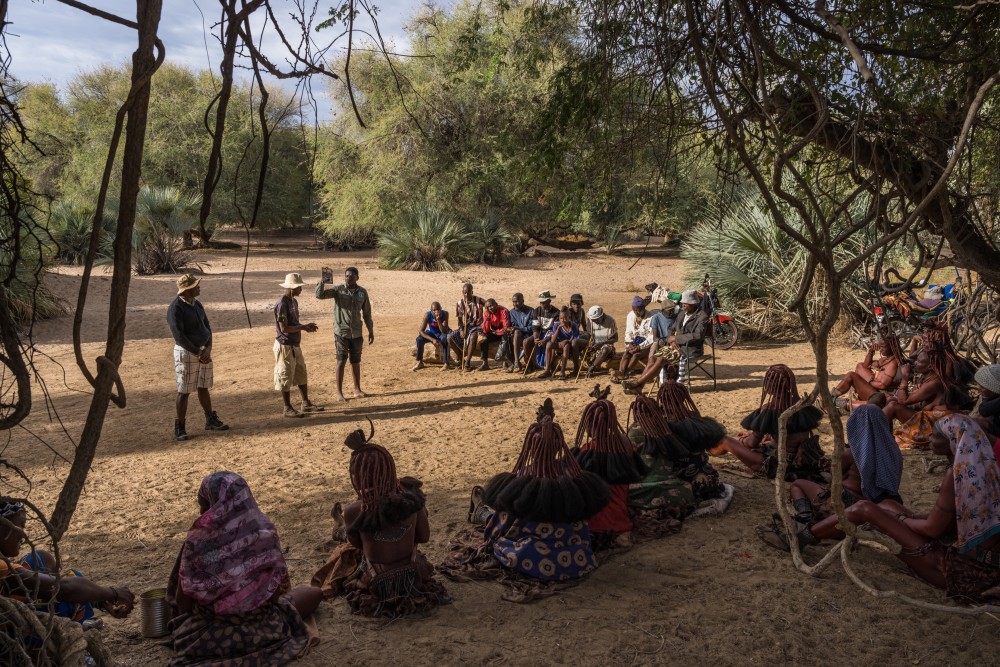Community engagement and development, with the needs of the 7,000 people living in and around the park, is a key focus, as effective management of the park continues. The local communities are primarily semi-nomadic cattle herders and comprise various ethnic groups within the Herero family, including the Himba people, living within and on the periphery of the park.
Community Engagement
Projects supporting community engagement are ongoing. Regular community meetings are held with traditional leaders (sobas) to maintain strong relationships with communities, focusing largely on environmental education and the importance of conservation.
The presence of livestock that overgraze and trample the fragile vegetation is a threat to wildlife, pushing species to fringe areas. Working closely with the communities is essential in maintaining the functional integrity of the park. Anti-predator activity, likely as proactive and retaliatory measures against livestock predation, also takes place. It is a priority of park management to work with the communities to find ways to mitigate this conflict and allow the predator populations to recover.
The Community Observer Programme provides a channel for two-way information flow. Community Observers and wildlife monitors report on wildlife sightings, and community feedback to park management, and provide information from park management to the communities in the form of updates or informative meetings.

Education and Environmental Awareness
As children are traditionally kept home from school to watch over the herds of livestock, the Community Development team has been working with local communities to place a higher value on education. In 2022, eight scholarships were provided to students who hail originally from the park and 110 students are being supported at two primary schools in or close to the park in the form of school meals.
Sustainable Enterprise Development
Working with semi-nomadic populations presents challenges to developing sustainable enterprises. However, the park’s Community Development team has been working with local communities to better understand what type of artisanal handicrafts can be produced by local women. A pilot project working on establishing the market and facilitating the sale of these handicrafts is expected soon.